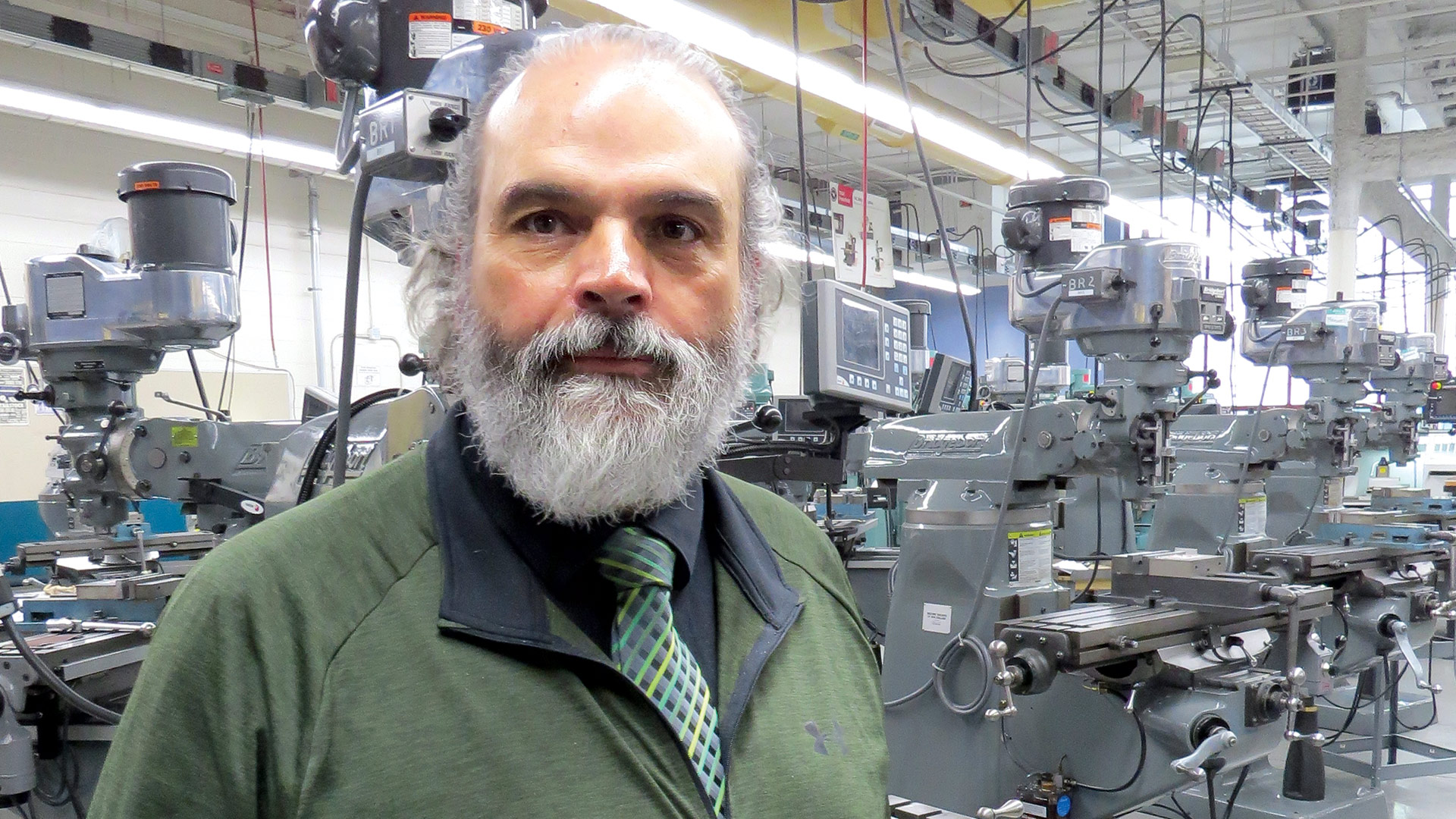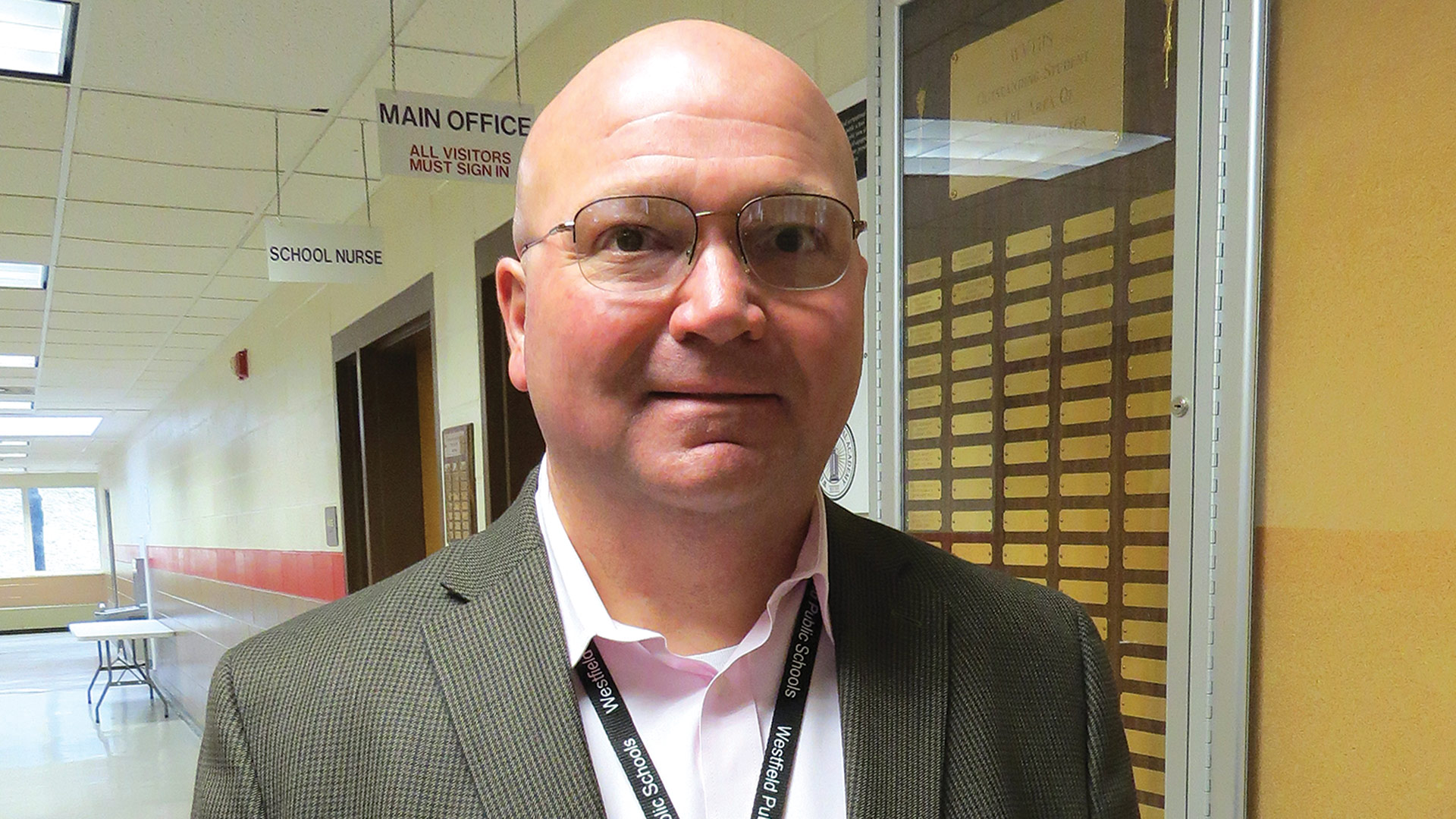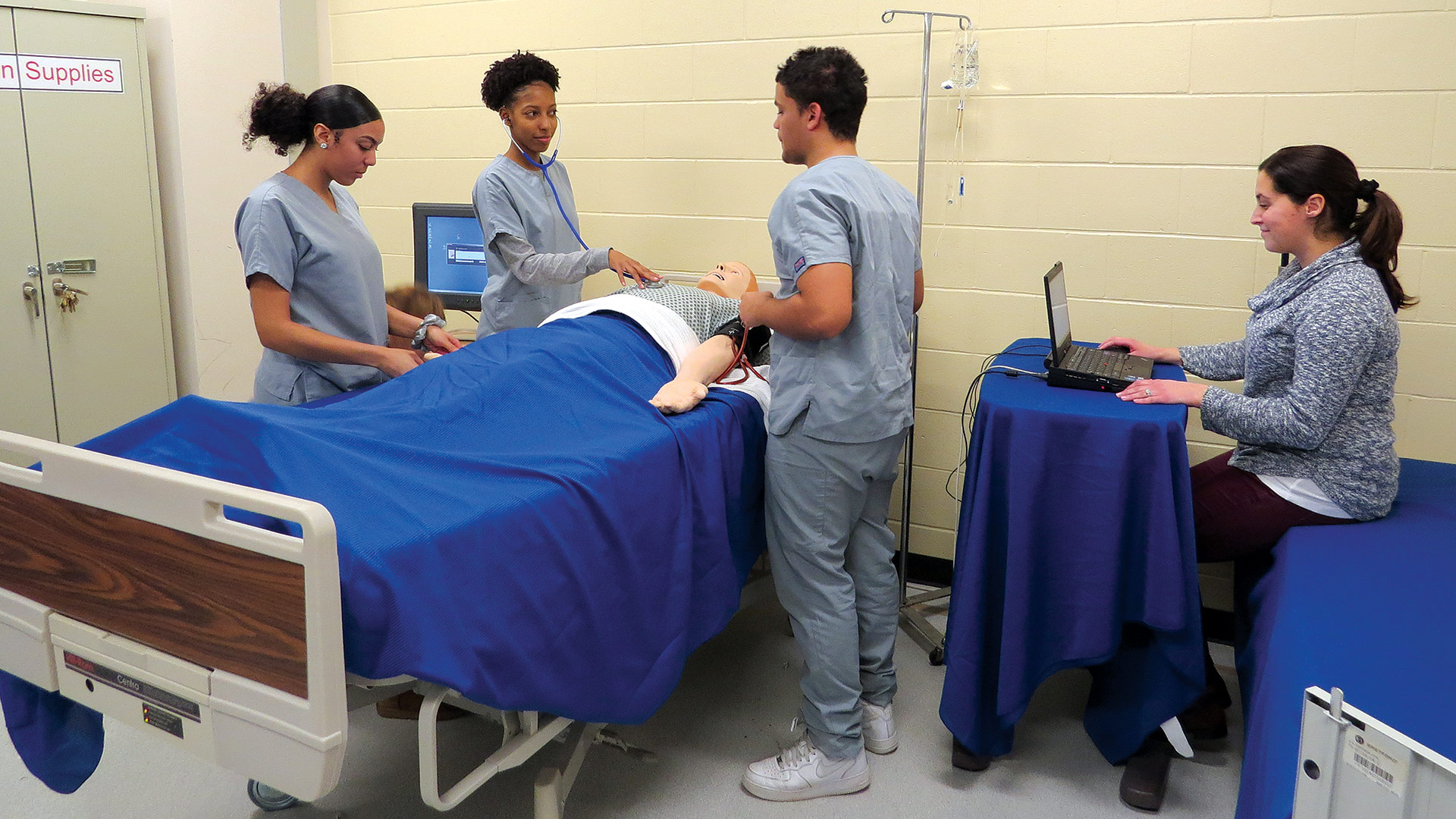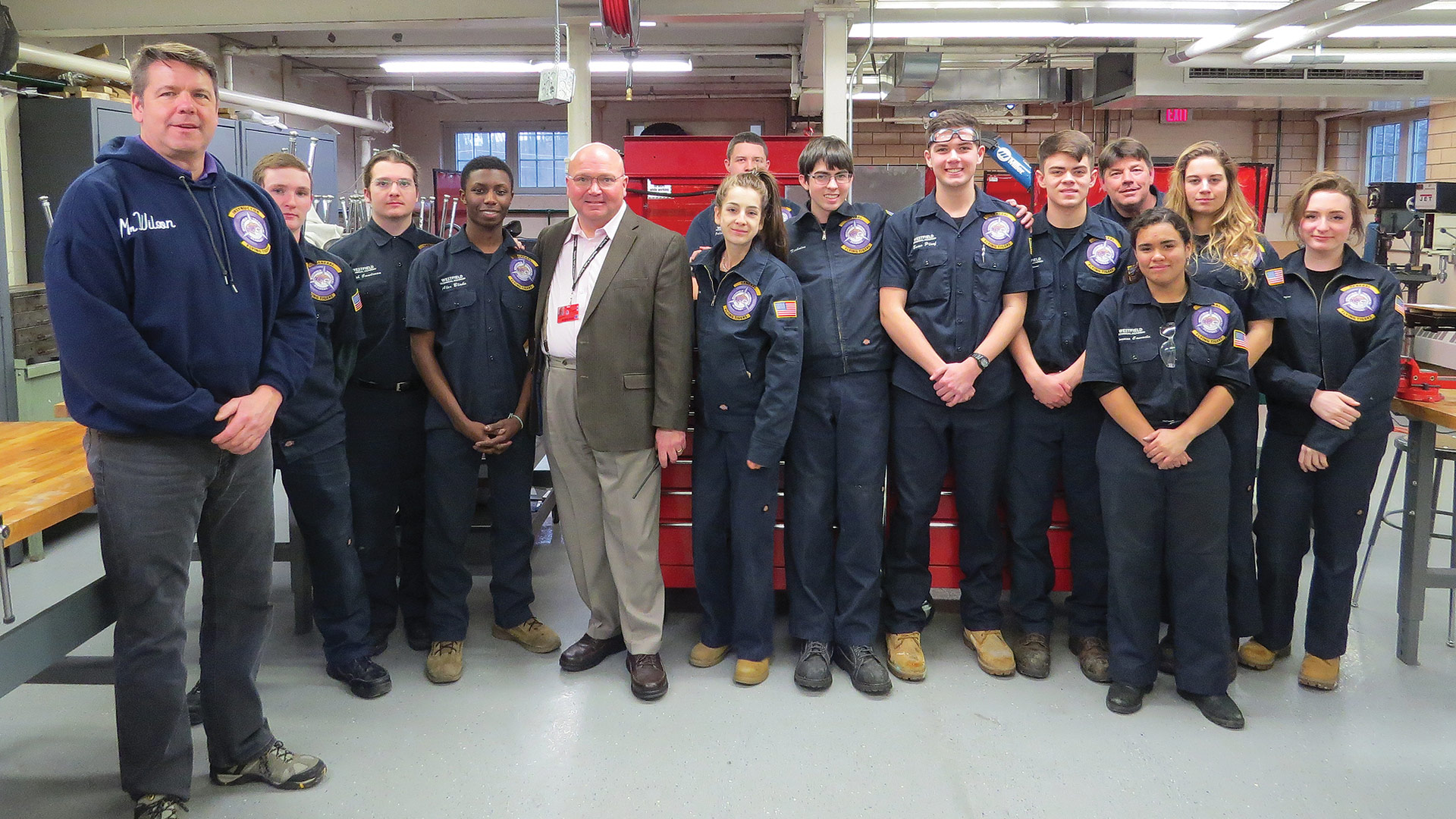Hire Ground?

For months now, business owners and elected officials have pinned the region’s mounting labor woes and all those ‘help wanted’ signs on too-generous federal unemployment assistance. Now that those benefits have expired for more than 3 million Americans, we’ll soon find out just how much of a factor those benefits were. Many involved in economic development and workforce matters say the problem has much deeper roots and that it might be some time before there is a return to anything approaching normal — whatever that is.
Dave Gadaire says considerable thought went into the timing of the massive, statewide job fair he helped coordinate last month.
Indeed, he said the week-long virtual gathering, said to be the largest such event ever staged, was scheduled for a time when employers across every sector of the economy were struggling to fill vacancies, often to the point where it was impacting productivity, if not profits — and when large numbers of individuals would be staring down the loss of federal unemployment benefits (specifically those weekly $300 bonus checks) in less than a month.
The thinking was that the convergence of these factors would create a sense of urgency and that the foundation would be laid for some good matches between employers and job seekers at this job fair.
And while that happened, and all those involved with the job fair, from the governor on down, have declared it a success, there are certainly question marks as to just how many matches will be made and whether this event will put a dent in a labor shortage that is, by all accounts, without precedent.
In many ways, the job fair, and the uncertainty concerning the bottom-line results from it, are a microcosm of what’s happening with the job market here and elsewhere, said Gadaire, president and CEO of MassHire Holyoke Career Center. The ongoing plight of employers seeking help and the end of those federal benefits would, logically, seem to indicate that jobs are going to be filled — probably sooner than later.
Rick Sullivan
“States that ceased the incentive on their unemployment earlier have not seen huge upticks in labor participation. But we’ll see what happens; we certainly think some people will enter the workforce when the benefit goes away.”
But more evidence is indicating this is not going to be the easy fix that some employers and many elected officials — people who have been pinning the ‘workforce crisis,’ as it’s called, on an over-generous federal government — thought it would be.
Rick Sullivan, president and CEO of the Western Massachusetts Economic Development Council (EDC), told BusinessWest that data and anecdotal evidence from states that did away with the federal bonus checks months ago indicate this has not been the cure most thought it would be.
“States that ceased the incentive on their unemployment earlier have not seen huge upticks in labor participation,” he noted. “But we’ll see what happens; we certainly think some people will enter the workforce when the benefit goes away.”
He was quick to note, however, that he has heard from some of his members that, through smaller, more-targeted job fairs and other recruiting efforts, they are seeing an uptick in the numbers of applications and hirings. Still, he said far more evidence is needed to get a real grasp of what’s happening with the labor market, let alone project what will happen over the next few quarters and beyond.
Kevin Lynn, president and CEO of MassHire Springfield Career Center, agreed. “Murky” was the word he used repeatedly to describe the future of the jobs market in this region.
“This whole thing is not new. We’ve been hanging this lack of applicants on COVID and the unemployment situation. But if you go back to, let’s say July through December of 2019, all you heard from companies was that they had no applicants, and when they did have an applicant, they were being ghosted — ghosting became the new term.”
“It’s an incredibly murky time, because it’s all unprecedented,” he explained. “And there are so any variables. This is not a recession, it’s a healthcare crisis, and it’s been like a rollercoaster; we seem to be on a rollercoaster going down again, and that does not play well psychologically.”
Lynn went further and said that, while the problems and frustrations currently being experienced by area employers may be heightened by the pandemic and factors related to it — childcare shortages, fear of returning to the office, mass retirements, and an unwillingness to work for low wages (he and others would get into all those) — in many ways, it’s all simply a continuation of what was happening before the pandemic.
“This whole thing is not new,” he said. “We’ve been hanging this lack of applicants on COVID and the unemployment situation. But if you go back to, let’s say July through December of 2019, all you heard from companies was that they had no applicants, and when they did have an applicant, they were being ghosted — ghosting became the new term.
“Companies were having major recruiting problems prior to COVID,” he went on. “What we’re seeing is nothing new.”
For this issue, BusinessWest talked with several area economic-development leaders about the workforce crisis and the murkiness that surrounds just what will come next.
Food for Thought
Lynn told BusinessWest he was in Boston over Labor Day weekend. During his time there, he had an experience at a restaurant that was eye-opening if not frightening — a hard look at how things are for employers, especially in hospitality, and how they might — that’s might — continue to be.
“There were 15 tables there, and one woman was waiting on all 15 tables — I couldn’t believe it,” he said, using exasperation in his voice to add an exclamation point. “She was hustling, and I mean hustling. They had one woman on the tables, they had one person busing, and they had a bartender — I don’t know how many they had in the kitchen. The food was coming out, and she was hustling.”
Nancy Creed
“It’s such a competitive market, and it’s so hard to find talent that … you may hire some great talent, and two weeks later another company scoops them from you. And there is no employee loyalty.”
While that situation represents an extreme, it encapsulates what many employers are facing these days — an inability to staff up in the manner they want and need, often in ways that impact service, the customer experience, and, in many cases, the bottom line.
In Western Mass. and many other regions, print shops have been working overtime filling orders for ‘Help Wanted,’ ‘We’re Hiring,’ and ‘Join Our Team’ signs. Meanwhile, other signs get far more specific, listing benefits as well as as wage scales and sign-on bonuses. Meanwhile, most restaurants in the region have cut back days of operation and closed portions of their establishments, school systems struggle to hire bus drivers, and healthcare providers tussle with one another to find nurses and other professionals.
And the fight certainly doesn’t end when the person is hired, said Nancy Creed, executive director the Springfield Regional Chamber, adding that loyalty among employees is a thing of the past, and retention is every bit as challenging as hiring.
“It’s such a competitive market, and it’s so hard to find talent that … you may hire some great talent, and two weeks later another company scoops them from you,” she noted. “And there is no employee loyalty.”
The questions on the minds of everyone in business and economic development concern just when, and to what extent, the pendulum will swing back in the direction of an employers’ labor market.
And the answer is a universal ‘I don’t know … we’ll have to wait and see,’ or words to that effect.
While the massive virtual job fair didn’t provide any hard answers to what’s ahead, neither did the most recent jobs report, which was a headscratcher to most analysts; only 235,000 jobs were added in August, the lowest number since January, following expectations for three times that number.
Getting back to the job fair, it was large in every respect, said Gadaire, who broke down the numbers. The event drew more than 1,700 employers from across the state and across all sectors of the economy, and 17,264 job seekers. Over the course of week, 21,046 résumés were exchanged, and there were nearly 1.4 million virtual visits to the companies’ booths.
While those totals are all impressive, they will not ultimately define how successful this event was, he went on, because the numbers that really count concern the number of jobs to be added in the weeks and months to come.
“We felt we at least got some mass when it comes to what we were trying to do,” said Gadaire. “What we’re doing now is doing all the follow-up to find out how much of that turned into job offers and hires; we’re getting that information back from the companies now as we speak, and it looks like a pretty successful event.”
Time will tell, obviously, and there are a number of factors that will ultimately determine how much of a dent will be put in the state’s labor crisis.
Indeed, those we spoke with said the federal unemployment benefits were certainly a contributor to the deepening of the labor shortage that’s been witnessed over the past year and especially the past nine months. But it appears it’s not as big a factor as many thought, and in the meantime, there are many other factors.
Childcare, or a lack thereof, is a huge issue, said Creed, noting that many working parents — or parents who were working, especially single mothers — cannot return to the workplace without childcare, which is suffering from its own workforce crisis and other issues. Fear of COVID is another factor, she added, noting that the recent surge in cases spawned by the Delta variant will, in all likelihood, slow any kind of return to something approaching normalcy when it comes to the labor market.
“There are three large contributors — the federal stimulus, childcare, and the virus itself,” Creed said. “They all play a role to some degree within specific demographics and populations, and we just need to give it some time to play out and see what happens.”
Money Talks
Which leads to another question: just what constitutes normal these days?
Is normal what was seen in 2019, as described by Lynn and others? Is normal what existed a decade or more ago when unemployment was low, yet candidates were far more plentiful?
More to the point, what will be … wait for it … the new normal? And what do employers have to be thinking about as they try to navigate that new normal?
That’s a lot of questions, many of them without easy answers.
Indeed, as a result of the labor shortage of the past several months, wage inflation has become a matter to contend with, and it is one of many factors keeping matches from being made.
“Job seekers have realized that they’re in a bit of a buyer’s market right now,” Gadaire said. “They are in high demand, so they’re asking for higher wages than what most companies are offering or can offer, and that’s certainly a problem.”
Creed agreed. “Not every business can afford to pay $40 an hour,” she noted. “So when you hire someone, and they get pennies more at another company, they’re going to switch; it creates a wage competition that small businesses just can’t afford.
“A lot of these businesses already have very thin margins — so there’s not a lot of wiggle room,” she went on, adding that budget concerns are further compounded by unemployment-insurance issues, paid family leave, hiring incentives and bonuses, and more.
Also, the surge in the pandemic has brought a whole new level of concern, as some people are afraid to enter the workforce, Gadaire noted. “A few months ago, I thought that problem was going away, but now, here we are again.
“And that has the ripple effects attached to it, like childcare and transportation,” he went on. “And then there’s the very real onset of people realizing, and businesses realizing, that remote work is now not just a luxury, it’s a reality, and people are redefining how they do work.”
For some companies, he explained, especially those in hospitality or the broad service sector where workers are face to face with customers, remote work is simply not an option. But for those where it is an option … those companies should look long and hard at creating such remote-work opportunities because doing so will greatly increase the amount of talent available to them.
Creed said the companies may also need to rethink how they hire and whom they hire moving forward.
“Does that position really need a four-year degree? Can it be a two-year degree, or a certificate, or just a GED?” she asked rhetorically, while noting just one way companies may be able to widen the pool of applicants for a job. “We need to rethink our recruitment practices, which is something we’ve always talked about, but now, I think you have to start digging deep into your workforce and saying, ‘how can I adjust?’”
While companies have to be creative and innovative, so too does the region, said Sullivan, adding that a new ‘job trail,’ created by the Greater Springfield Convention & Visitors Bureau and supported by the EDC, is one such example.
On Sept. 8 and 15, participating businesses throughout this region put out signage and orange and blue balloons to identify the ‘trail.’ Interested applicants could visit those businesses, fill out an application, and perhaps schedule an interview (participating companies were required to have people on site to handle inquiries during designated hours).
“There’s a focus on restaurant and hospitality jobs, but we have Yankee Candle, United Personnel, Big Y, Monson Savings Bank … we’ve had a really good response,” he said. “It’s a good cross-section of jobs, and the timing of it is not incidental — we appreciate the fact that the unemployment benefits are running out.”
The Job at Hand
As with so much else with this evolving story, time will tell regarding how effective outreaches like the job trail have been when it comes to easing what has become a historically challenging labor market for employers.
For months, experts have speculated about why so many jobs have gone unfilled when so many people are out of work and supposedly looking for work. The federal unemployment benefits were presumed to be the main culprit, but as the weeks and months go by, it’s becoming clear that there is far more to this story. And, as Lynn and others noted, what’s going on is really a continuation, and perhaps an escalation, of what was already happening before the pandemic.
Answers to this crisis have been slow to emerge, and the hope is that, in the weeks and months to come, matters will become more clear and the pendulum will finally begin to swing back.
George O’Brien can be reached at [email protected]












